Please allow the Java window to load. If you do not have Java enabled, then go to the bottom of the page.
"It's cheaper than factory ammo."
"It's faster than factory ammo."
"It's more accurate than factory ammo."
"It's more reliable than factory ammo."
"It's just a hell of a lot of fun!"
I first started "rolling my own" ammunition somewhere in the early 1960's. Probably around 1962 or 1963. I was shooting a .357 Magnum, a .44 Magnum and a Super .38. Factory ammo was fun and plentiful, but it wasn't cheap.
A friend of mine, named Sanderford, had an old Pacific press and dies for the .357 and the .44. He showed me how to make my own cartridges for about 1/3rd the cost of factory ammo. I became hooked immediately!
At that time we were casting bullets out of old wheel weights, which we got for free from the local tire store, and any other source we could locate. We weren't worried about content or hardness. All we knew was that we were getting bullets for free.
We saved our own brass, and picked-up whatever we found on the ground, or could scrounge from other shooters. At that time there was plenty of brass to be found in the local dump and the local sand pit.
All we had to buy was the powder and the primers. (My memory kind of fades at this time, but I believe that powder was going for around $3 a pound, and primers were around 50 cents per 100.)
We were using either Unique or Bullseye. Whichever it was that only required around 3 grains of powder. Totally cost for 100 cartridges was around $1.00! Hell, .22 rimfires cost about the same!
There was a drawback or two ... accuracy past 25 yards was absolutely miserable! And getting all that damn lead out of the barrel after a day of shooting would take forever!
I decided that there had to be a better way, and that's when Murph introduced me to his swaged bullets. No more messing around with the melting pot, or the other stuff. And no more of those gawd-awful fumes!
And the bullets were for free. Murph was thinking about going into the bullet manufacturing business, and he was going to specialize in lead pistol bullets. He needed someone to do 'field testing' and submit a report.
Murph wasn't very happy about my report! I had used around 2,000 or 3,000 of his bullets, and I hated them! The only advantages they had for me was that they were still free, and he was doing the work. The problem was that Murph was making these bullets out of 100% pure lead wire. And after every 10 or 15 rounds the barrel of both my revolvers were smooth-bore! I've never seen so much lead in my life!
About this time an outfit called Speer came on the market with half-jacketed pistol bullets. Up until then all you could get for reloading was all lead bullets ... and there was no way I was going to buy all lead bullets!
I tried some of Speer's bullets, even though they cost me money, and was amazed that I could do a full day's shooting, and not one molecule of lead was left in the barrel. The price of reloading just went up!
The Speer bullets had one design. They looked like a Keith bullet, but where the crimping groove was supposed to be, a copper cup spread itself back and wrapped totally around the base of the bullet. They came in flat-point and hollow-point designs. The hollow-point was nothing more than the flat-point which had a small portion of the nose drilled-out. Accuracy? Who cared! Besides, a handgun in those days wasn't expected to hit anything more than 20 feet away.
Sanderford moved, and took his press with him ... very inconsiderate of him. So I had to buy my own. The local discount store had an R.C.B.S. 'reloading kit' on sale. You got the press, a set of dies and a shell holder in the caliber of your choice, a scale and a powder measure all in one box, and the price was well within my means. (Again my memory fails me, but I think it was around $40.)
I took dies for the .357, and purchased dies for the .44 and the Super .38. This was quite an investment in those days, but a lot of my friends were really impressed. Yes, I started reloading the Super .38. With FMJ Speer bullets. I was a confirmed Speer user.
The jacketed bullets relieved me of casting my own, they relieved me of cleaning the guns. I'd go out shooting, come home, wipe the outside of the gun off, and put it away until I was ready to use it again. No lead, no muss, no fuss. Until one day I saw green stuff growing out of my barrel! I got out my flashlight and looked down the bore, and it was about the same color as the Statue of Liberty!! What the hell was this? I asked the owner of the local gun shop, and he told me it was copper fouling. It took me quite some time to remove all that copper fouling from my guns, and I started cleaning them after every shooting session.
That was my introduction to reloading. I bought whatever bullets were the cheapest, whatever powder was the cheapest, and whatever primers were the cheapest. After all, wasn't reloading supposed to allow the shooter to make cheaper ammunition?
In the very late 1960's or early 1970's I started reloading my rifle ammunition. I used the same formula for reloading them as I did for my handguns. Cheaper is better. Until I purchased my first 'Varmint Gun'.
The idea was to get that little .22 caliber bullet out of the barrel as fast as possible, causing more devastation on the receiving end. I had to get at least 4,400 fps out of that .220 Swift, or I wasn't happy! (This is the same time period when I decided that it would be great to neck down a .50 cal. BMG case to .22 caliber and get 5,000 fps.) And I figured that whatever was good enough for the Swift, would be good enough for all my guns. So I opened the reloading manuals, picked the fasted load for each caliber that I owned, added around 10% to it, and thought that I had the fastest guns in the west ... and I probably did. But I would totally miss my target around 40% of the time!
I thought it was really neat to fire five rounds, and then have the barrel so hot that you couldn't lay a hand on it. This was the true indication of a really "hot load"! Then I found out about barrel erosion, throat erosion, barrel wear, and how much it cost to replace the barrel on a rifle. It was about the same time that I found out that even a Colt Government model could only take so much of a beating before yelling for help!
It was during my "fast bullet" days that I moved from California to Pennsylvania. Being the hotshot that I was, my first stop when I got relocated was to the local gun shop. I was going to tell these easterners how us westerners shoot! That's when I met Dave Waters. He was the owner of Water's Sporting Goods. He sat patiently and listened to my bragging and exaggerating. Then he asked me one question ...
When it .... missed them?"
Hummm ... Dave had a point. After all, wasn't the whole idea of shooting to place a bullet on your target, be that target a piece of paper or something with fur.
This was the beginning of my "accuracy years".
I became obsessed with the idea of placing 100 bullets, at 100 yards, in the same hole. I tried every possible combination of bullet, primer, powder and case until I obtained my goal. Needless to say, I never did. But it made Dave happy, since I bought just about his entire stock of reloading supplies, and had him on the phone to his jobber constantly trying to locate whatever the latest gun magazines said was the newest and best. Ahhh ... those were the days!
Facing reality, and listening to Dave's advice, it became apparent that I would never find my Holy Grail. BUT ... I did learn something!
CCI primers worked best in all my handguns. Remington primers worked best in all my rifles. Winchester brass lived longer in my handguns. Remington brass was best for all my rifles. And there was nothing on the market better than the Sierra Hollow Point Boat Tail bullet in any rifle that I owned. And for handgun bullets? Hell, anything would shoot well if I had the proper load! So I gave up on the old Speer bullets, and started using Nosler and Sierra. In everything except my .45 ACP, which just loved the Hornady bullets.
My velocities came down ... my accuracy went up. I was now placing everything I own into a 2-inch group at 100 yards, and at a velocity that would insure that the receiver of my bullet would not get up and walk away.
It was about now that my old R.C.B.S. reloading kit seemed to have outlived its usefulness. So I bought a new RockChucker, new die sets (all my bottle-neck die sets had to include along with a full size die, a neck size die) and all my straight-walled sets had to include both a carbide sizing die and a taper crimp die. It was also now that Dave had gotten me interested in trap shooting, so I bought a MEC 650 and all the junk that goes with it. Instead of a reloading bench I now had a "Reloading Room"!
Now we get into what I call my "Moderation Days", sort of. Not satisfied with 2-inch groups at 100 yards, I decided to throw out all my old reloading data and start from scratch with each and every gun that I owned. My new goal? Everything under .30 caliber had to shoot a 5-shot group of less than 1-inch at 200 yards, and everything over .30 caliber had to shoot a 5-shot group of less than 2-inches at 200 yards. And I had to place at least 5 out of 6 shots from any handgun into a 1-gallon milk jug at 100 yards.
Yes, I accomplished that goal, but I placed some very tough limitations on myself. First of all, rifles MUST use Remington brass and handguns MUST use Winchester brass. For bullets the selection was easy. I HAD to use Sierra's HPBT bullets in every caliber! 52-grain in my .22's, 85-grain in my .24's, 120-grain in my .25's, 140-grain in my .26's, 168-grain in my 28's, and 180-grain in my .30's.
After many years I finally have two .22-250's that shoot less than 1/2-inch groups at 200 yards. My .220 Swift, after another re-barrel, now shoots the same less than 1/2-inch group. My .243 Winchester and 6mm Remington both shoot less than 3/4-inch groups, and all my other rifles do less than 1-inch groups at 200-yards. There is one bug in the ointment.
After 6 years ... that's right ... 6 years, I hadn't found a load for the .25-06 that would meet these expectations. I knew that the rifle was capable of it, I knew that I was capable of it. All I had to do was find the right combination. After trying hundreds of different loads, using scores of different powders and varying bullet seating and case trimming by as little as .001 of an inch, I decided that something has to change. I wasn't going to give up on the Remington brass (I had developed a habit of buying 1000 pieces of brass, all of the same lot number). I wasn't going to give up on the Sierra HPBT bullets ... that would have been sacrilege! So I took the best load I had, which was around 1-1/2 inch at 100 yards, and started switching primers. First I switched to Remington Magnum primers ... no change. Then I tried CCI regular and magnum primers ... no good. Then I tried Federal regular and magnum primers ... no good. Then I tried Winchester regular primers ... and would you believe, that just changing to Winchester primers, instead of the Remington primers, that the group halved its size? The .25-06 now shoots right in there with the rest of them! (Yes, I tried a couple of the other calibers with Winchester primers ... and they fell apart!)
Believe it or not, during this process, and during my active trap shooting years I managed to wear out both my RockChucker and my MEC 650. So now the reloading bench has an R.C.B.S. BigMax and a MEC 9000G mounted to it.
I just couldn't stand it! Looking at that empty space left by the old Rock Chucker press, I just had to buy a new one!! (Old habits die hard...)
Other items that can be found in the reloading room are a couple of Lyman Auto-Flo 2200 tumblers, Forster case trimmer, R.C.B.S. Trim Mate case prep machine, an R.C.B.S. 5-0-5 scale and an R.C.B.S. 10-10 scale, the good old Lyman powder measure, a couple of R.C.B.S. powder tricklers, several stainless calipers and micrometers, assorted wrenches and screwdrivers, and tons of other "stuff" never intended as reloading equipment (like three "meatloaf pans", a "lasagna pan", and a couple of "paintbrush strainers").
Since I started reloading over 40 years ago, I have gone through many stages. But today, thanks to all those idiot days, I have a new reason for reloading ...
My reloads are cheaper, more accurate, and more reliable
than anything the commercial factories can put on the market.
And, I have a hell of a lot of fun doing it!
 |
 |
 |
 |
 |
 |
 |
 |
 |
 |
 |
 |
 |
 |
 |
 |
Below I have listed a few links to some of the reloading component manufacturers and even some of the factory ammunition manufacturers.
I've also included some links to shooting associations and other firearms/reloading pages.
(If you have a page you would like linked here, leave me the information, and place a link to this page on your page.)




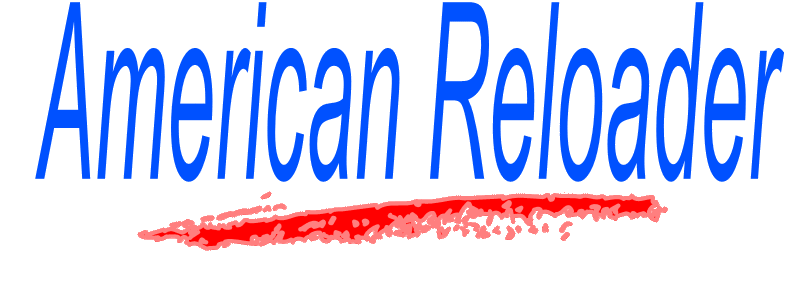


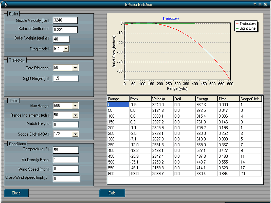












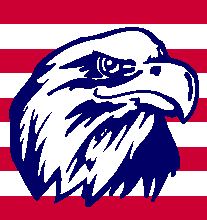











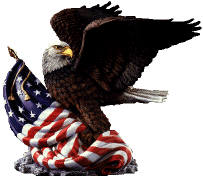

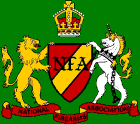













![]()
Table 1) Some of the cartridges I have reloaded with technical and personal details and data. Table 2) Downloadable Catalogs. Table 3) All kinds of stuff about reloading and firearms. Table 4) The complete reloading data page. Table 5) JAVA Ballistic Page. Table 6) Cartridge Drawings and Dimensions Table 7) All About Bullets Table 8) Terminal Ballistics Table 9) Ballistic Software Downloads
The Front Page ~ Opinion Page ~ Welcome ~ Big Sky Country ~ More Montana ~ Even More Montana ~ My Bronco
4x4 Aftermarket ~ Photography ~ MIDI Jukebox ~ ZIPped MIDI Files ~ Movies ~ Firearms ~ Weather Page ~ Me
Stephen Ricciardelli
